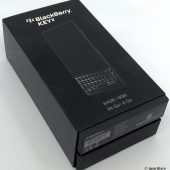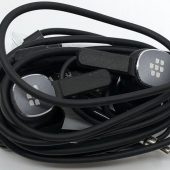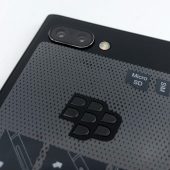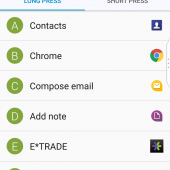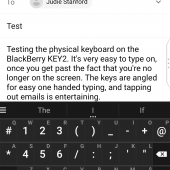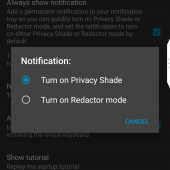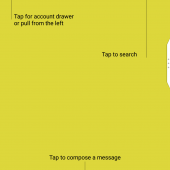
Last year, I reviewed the BlackBerry KEYone, and I found it to be an excellent update to the BlackBerry line. A year has passed, and the BlackBerry KEY2 is now available. Should you get one?
The all-new BlackBerry® KEY2 delivers an iconic smartphone experience unlike any other, embracing the heritage of BlackBerry that includes the most intelligent keyboard ever all in the most secure Android™ smartphone.
Much like driving a sports car with a manual shift, there’s something deeply satisfying about tapping out your emails and social media posts on a physical keyboard. Is it nostalgia? Is it a sense of being in control? Is it wanting something different that stands out from a pack of other devices that all look the same? Maybe that’s all part of it. But if you’ve ever found yourself looking back fondly to the days when all the coolest phones sported a physical keyboard, you’re going to be interested in the KEY2.
Let’s take a look at what’s in the box; inside, you’ll find the KEY2, a Type-C USB cable, a wall charger, a set of BlackBerry branded earphones, assorted size silicone earbud tips, a SIM tool, a quick-start guide, and other assorted user information.
Available in black or silver, the BlackBerry KEY2 measures 6″ tall by 2.9″ wide by 0.35″ thick; it weighs 5.8 ounces. The KEY2 has a Series 7 aluminum frame with a 4.5″ (1620×1080) IPS LCD Gorilla Glass display. It runs Android 8.1 (Oreo), and BlackBerry is promising an update to Android P at a later date. Inside, the KEY2 has a Qualcomm SDM660 processor with Kyro 260 Octa-core. The KEY2 has 6GB RAM, and it is available in a 64GB or 128GB user memory version; it can also take up to a 256GB microSD card, so the memory is expandable.
The BlackBerry KEY2 Walk-Around
On the top front of the KEY2, there is an 8-megapixel fixed-focus front-facing camera, the ear speaker, various sensors, and a notification LED. Under the display, there is a physical QWERTY keyboard that takes up about one-quarter of the device. The keys are a scratch-resistant matte black, and they are 20% larger than those that were on the KEYone; the keys are spaced for more accurate typing and less inadvertent fat-fingering. The phone itself is quite solid; it feels substantial without being too heavy, and it’s comfortable to hold.

On the left side, there is a combo tray that holds a nanoSIM and microSD card. BlackBerry says it will work with up to a 256GB microSD, but I suspect it will also work with a 400GB microSD if you’ve got one of those in your possession. Alas, I don’t … yet.
On the bottom, there are aluminum perforations that cover the microphone on the left, the Type-C sync & charge port, and aluminum perforations that cover the speaker. Look at the keys, while I have your eyes on this photo; they each have an easy to grab incline that makes for a great typing experience. Also, note the new Speed Key on the bottom left; I’ll discuss that further into the review. The fingerprint reader is located in the spacebar; I’ve found it to be fast and accurate.

On the lower right side, there is a “smarter” convenience key which adapts to your circumstances; I’ll talk more about that further into the review. Next is the power key, and then the volume up and down key. Screenshots can be taken by pressing the power and volume down keys at the same time.

On the top of the device, there is a 3.5mm headset jack and a microphone.

On the back of the KEY2, there are dual rear-facing camera lenses; both are 12-megapixels with a dual-tone LED flash, HDR, 4K video recording at 30 fps, Scan, and Private Capture. One of the lenses has a 79.3º field of view (FoV) with 1.28um pixels, F1.8, and Dual Phase Detect Auto Focus (Dual PDAF). The other lens has 50º FoV, 1.0um pixels, F2.6, and Phase Detect Auto Focus (PDAF). The back of the BlackBerry KEY2 has textured soft-grip surface that feels nice and grippy in-hand.
Let’s look at some of the physical differences between the KEYone and the BlackBerry KEY2. The KEY2 is just a couple of millimeters taller; the design is slightly thinner and less rounded. It looks professional without being boring. You can see that the newly redesigned keyboard is larger, and the keys have much better spacing. The three capacitive Android buttons that were always visible below the screen on the KEYone are now subtly worked into the border under the KEY2’s display. What you can’t see is that on the inside, BlackBerry has updated the KEY2 with a faster chipset, double the RAM, and double the internal storage.

You can see that the power button is no longer on the left side, as it was on the KEYone; the entire effect is much sleeker and less flashy. Granted, my KEYone was a silver model, but the matte black makes for a visually pleasing phone.
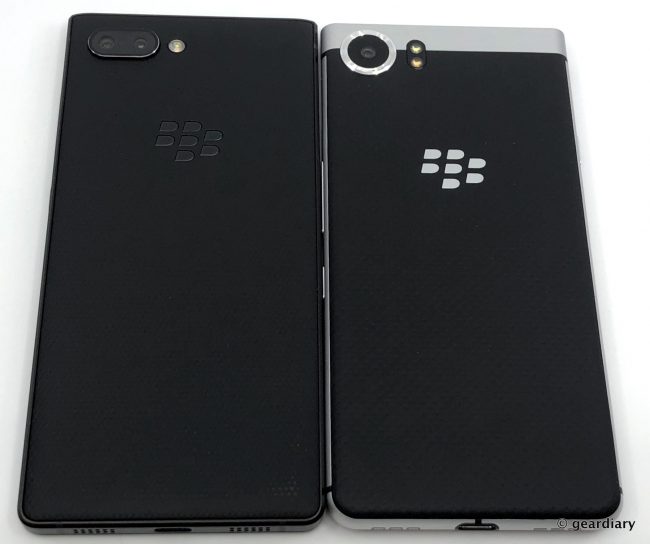
In this day of customizable on-screen keyboards and fast thumb-typists, it might seem like a step back to return to a physical keyboard. But as someone who kinda felt that way about it at first, I’m, finding something oddly satisfying about typing on physical keys; I’ve disabled the onscreen keyboard …

… and I’m happy typing on the keys; it definitely makes the 4.5″ screen seem larger to not have to share space with an on-screen keyboard.
The BlackBerry KEY2 has a 3,500mAh battery with Fast Charge; I can go from 0-50% in less than 30 minutes. Battery life has been excellent; I get well over a day’s usage from a single charge, and due to Quick Charge, it is easy to top off as needed.
The camera on the BlackBerry KEY2 is good, but not as advanced as some we’ve seen. It can’t handle super low-light situations, but it does very well in natural light and closeup photos.
A cool feature with the camera is that you can take “private” photos by double-tapping the spacebar/fingerprint reader. They won’t upload to Google Photos, and they’ll show up in your Private Locker; once there, they are only available for viewing by entering your passcode (that is separate from your PIN code) or using your fingerprint. Private Locker also offers private Mozilla browsing (there will be an update to bring this to Europe in July) and the storage of private apps and files. Have fun with that! 😉

BlackBerry KEY2 Features Worth Noting
The Convenience Key
You can use the Convenience Key to set a Home profile for when you are connected to Wi-Fi, a Car profile for when you are connected via Bluetooth, a Meeting profile when your calendar says you are busy, or you can access User Defaults to offer shortcut options when needed. Up to three shortcuts can be programmed to overlay the screen when the Convenience Key is pressed, so for instance, when you are on Bluetooth in your car, if you want Google Maps, Spotify, and your favorite drive-through’s virtual payment card to pop up when the key is pushed, you can program them to do so. When the KEY2 is connected to your car, it will know to show you those apps when the Convenience Key is pressed.
The Speed Key
The Speed Key allows you to enable shortcut access to any app at any time. There are 26 letter keys, so you can set up to 52 shortcuts by short or long pressing the Speed Key and the assigned letter key for the app or contact. I’ll show you how that gets set up further in the review.
Flick Typing & the Intelligent Keyboard
As you type on the touch-enabled BlackBerry KEY2, predictive text will float above the screen; you can flick up to accept suggestions, and — since the virtual keyboard doesn’t have all of the symbol keys — a flick down will reveal the symbol keyboard. a second flick down on the physical keyboard will scroll to the next page of symbols. Flicking down again will neatly remove the virtual symbol keyboard.
DTEK Security

DTEK Security is a BlackBerry feature that will “automatically monitor your OS and apps and let you know when your privacy could be at risk and how you can take action to improve it.” You get a visual representation of your device’s overall security rating, and then your BlackBerry will tell you what needs to be done to improve your score. You can also use it to manually scan your KEY2, but it will automatically notify you when an app is:
• Accessing the camera viewfinder without your knowledge
• Turning your microphone on
• Sending a text message
• Accessing your contacts, location, or financial information
Privacy Shade
If you want to block others from seeing private or sensitive information on your screen, you can enable Privacy Shade. It allows you to view only a small section of the screen that you control.
There is also a built-in redactor which allows you to block out sensitive information when you are taking a screenshot.
Fans of BlackBerry devices and physical QWERTY keyboards can rejoice because the BlackBerry KEY2 is a solid Android device that combines everything you like about the Android operating system with everything you love about your BlackBerry device. Is it secure? Yes.
BlackBerry Hub
Honestly, would it even be a BlackBerry device if it didn’t have the hub? The answer is no. With the BlackBerry Hub, you can pull in and consolidate all of your phone calls, text messages, social media alerts, calendar notifications, and email accounts into one place. THIS is the feature that I wish every device in every OS came with … but you can only get it on a BlackBerry.
The BlackBerry KEY2 is an excellent device for people who are worried about their privacy, those who want a physical QWERTY keyboard, those who want something different, and those who are ready to try something new-ish. You can learn more about it here.
The BlackBerry KEY2 retails for $649, and it will be available from Best Buy and Amazon starting on July 13th; you can pre-order from both sites starting on June 29th.
Source: Manufacturer supplied review sample
What I Like: Improved and larger physical QWERTY keyboard; BlackBerry hub!; Solid and sleek build; Very good camera; All the Android apps you love; Private Locker; DTEK Security
What Needs Improvement: Not everyone will be ready to go back to a physical keyboard, and it is an adjustment to do so; If you are moving from a larger screen, the 4.5″ screen may take a moment to get used to

